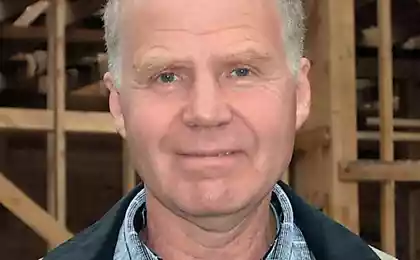364
The efficiency of the organization as a component of energy efficiency in the country
Global warming and the problems associated with it, has long crossed the borders of any one country. And global problems require a global approach in addressing them. One of the most striking examples of this was the Kyoto Protocol of 1997.
International agreement to reduce greenhouse gas emissions as a way to stem the pace of global warming signed by more than 120 countries. This document, governments expressed a common position on the fight against atmospheric pollution. The essence of the Kyoto Protocol is the following: after determining the allowable annual volume of emissions of greenhouse gases for each country that signed the document to develop the mechanism for adjusting quotas to participating countries, and create levers of control of emissions. In the end, each of the countries that have recognized the Kyoto Protocol, must reduce the amount of carbon dioxide emitted into the air, in the borders that were defined for it. This can be done in three ways: using the clean development, joint implementation, or using the trade in emission quotas.

The flexibility of the paths of achievement program of the Protocol allows each structure to choose what is more beneficial is to reduce the amount of CO2-emissions or to buy additional quota in excess. The same principle allows companies to trade quotas, which managed to save thanks to the natural reduction of carbon dioxide emissions. However, such a reduction is possible either through the decline in production that is not economically advantageous, neither the company nor the state as a whole, or through the modernization of production aimed at increasing its effectiveness.
Modernization, in addition to reducing CO2 emissions, helps to solve another important problem – the problem of efficient use of energy resources. In fact, one follows from the other. Because the greenhouse effect has appeared because of the burning of carbon fuels. A more proper construction of a production control will reduce harmful effects on the environment and to reduce the cost of its energy supply.
To determine the range the necessary changes will require a General assessment of the effectiveness of the organization. This is a comprehensive service that includes a series of evaluation activities – from quality of staff to the environmental efficiency of the entire production. To measure the effective of akadeemiliste of the company consists of two points. The first is the index of management effectiveness. It represents information about the degree of efficiency of administrative activity of the managers.
In this paragraph it is worth noting that the final result works for the whole collective enterprise. More about ways of improving personnel performance can be found on the websites of the companies offering services on assessment of motivation. The second term's success is an index of production efficiency, which is the numerical expression of the result of the transformation of production processes. To opportunities that can improve production management in terms of environmental activities, include the use of recyclable materials, development of new products, implementation of preventive measures, conserve resources, etc.

Environmental protection is inconceivable without the control of energy consumption, that is why such attention is paid to innovative ways of generating energy and best practices, allowing to increase the return while using the setting. Last to implement is not so difficult, here everything is in the hands of Directors of companies.
Improving the energy efficiency of the organization begins with an assessment of the status quo. Firm performance is determined by the ratio of the economic potential of the enterprise to each unit of production. And the higher the ratio of useful energy expended to the total amount of energy used by the production, the higher the efficiency of the organization. Thus, it becomes clear that the proper minimization of energy expenditure is beneficial to all stakeholders. It will result in not only economic benefits for the executives, but will also make a significant contribution to the global piggy Bank under the name of "saving energy resources of the planet."
Source: zeleneet.com
Plants in the house – clean air and psychological relief
Americans are switching to renewable energy sources























